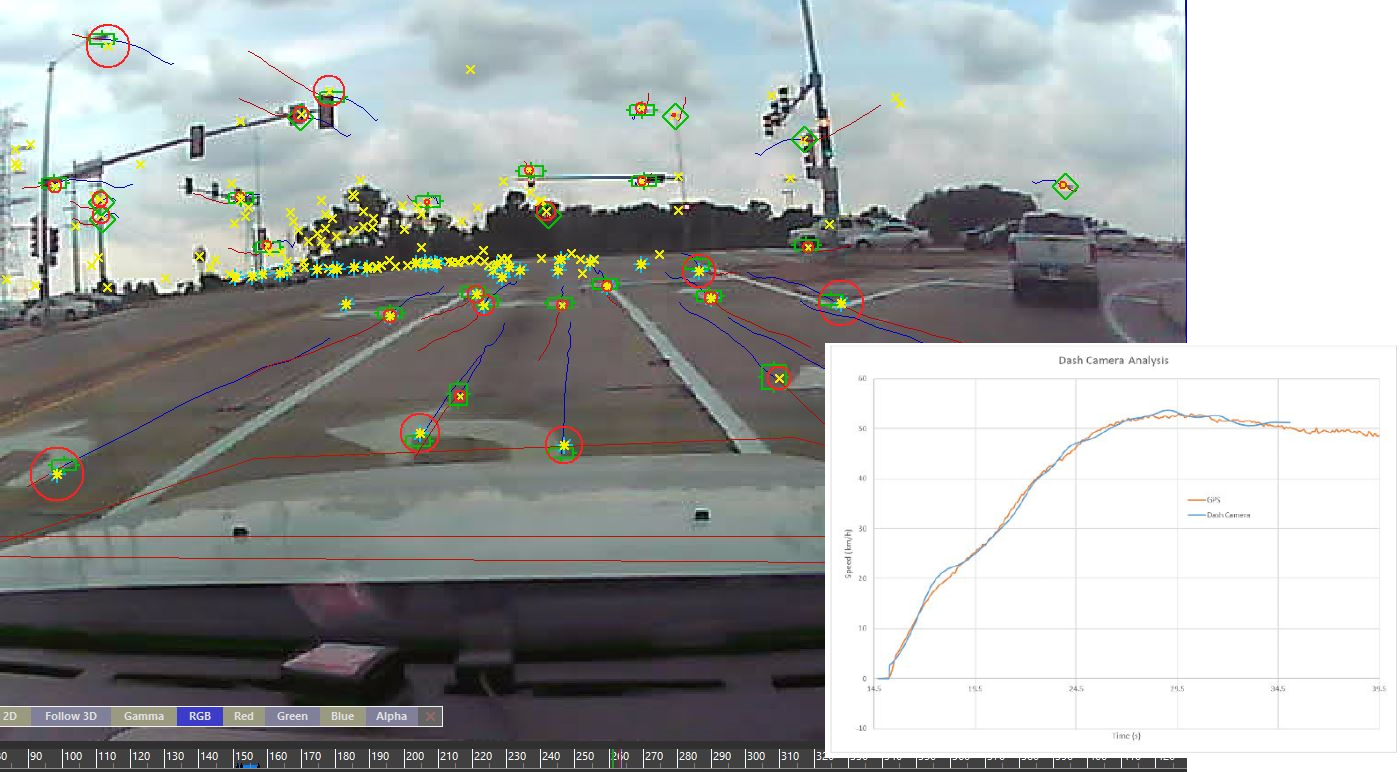Videos clips are often recorded at a frame rate that is lower than the 24/29.97/30 fps standards. Some examples include 5, 7.5, 10, 12 and 15 fps. A low frame-rate video is choppy and makes it difficult to assess vehicle speeds. Artificial intelligence algorithms can be used to interpolate the missing frames. This interpolation can produce a video that is smooth and natural, making it easier for to gauge speeds against our real-world references.
In the example below, a 30 fps video has had three of every four images removed. This resulted in a 7.5 fps video, representative of many videos that are received for analysis. AI frame interpolation was carried out, and the result was a 30 fps video that exhibits some smearing, but moves in a natural way. For comparison, the original 30 fps is also shown, with little difference in perceived motion from the interpolated clip.
As a bonus, the interpolated video can be used to verify the initial frame rate. When people can be seen in a low fps video, their movements are very jerky and unnatural. Frame rate interpolation can be carried out, and if the original frame rate was correct, their movements will be smooth and natural. If their movements seem too slow, or at a comical pace, it is an indication that the provided frame rate is too low or too high.


